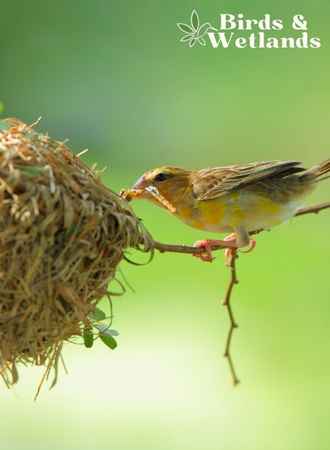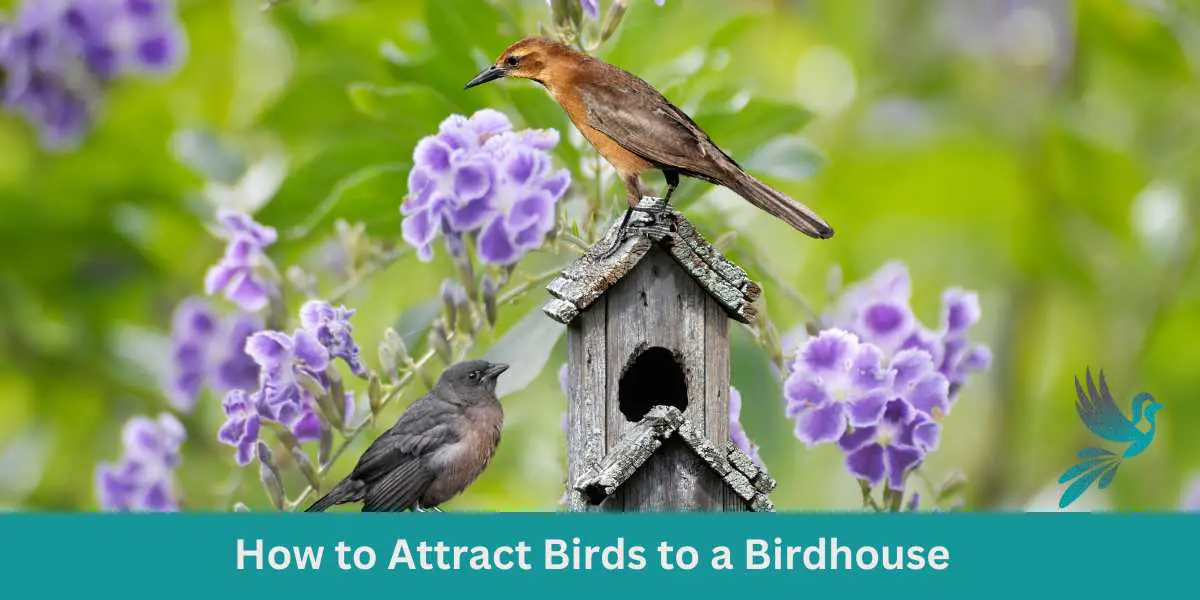Are you a bird lover looking to create a haven for feathered friends in your backyard? One of the best ways to do so is by providing a birdhouse. Bird houses offer a cozy place for birds to nest, enhance your backyard’s aesthetics, and provide endless entertainment as you watch your winged visitors come and go.
However, just putting up a birdhouse isn’t enough. You need to know how to attract nesting birds to it to ensure that it’s utilized to its full potential.
In this ultimate guide, we’ll dive into everything you need to know about attracting birds to your birdhouse, from choosing the right location and design to offering the right food and nest materials. Get ready to create a bird paradise in your backyard and witness the beauty of nature up close!
Key Takeaways on Attracting Birds to Bird Houses or Nest Boxes
- Birdhouses provide a safe and secure place for birds to nest and raise baby birds.
- To attract nesting birds, choose the right type of birdhouse and place it in a suitable location.
- Provide nest materials such as grass, twigs, and feathers near the birdhouse.
How to attract birds to a birdhouse
Birdhouses can be a great way to attract many birds to your backyard, providing a safe and secure place for them to nest and raise their young. However, just putting up a birdhouse may not be enough to attract common birds to it. Here are some helpful tips:
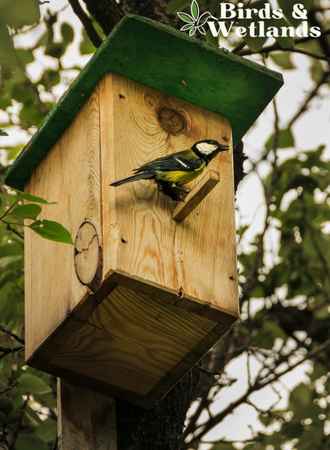
Choose the right type of birdhouse.
Different birds have different preferences when it comes to the size and shape of their nesting sites. Research the types of birds that are common in your area and choose a birdhouse that is specifically designed for that species.
For instance, if you want to attract purple martins, use bird apartment houses with an open nesting shelf. This means a bluebird house is quite different than purple martin houses.
When choosing the right birdhouse for garden birds, it’s important to consider the species you want to invite. Different types of birds have different preferences for entry hole sizes and house dimensions, so choose accordingly.
Look for birdhouses made of durable untreated wood like cedar or cypress, as these provide insulation and weather resistance. Always choose natural wood materials for the right house. Painted and pressure treated wood can harm birds.
Ensure proper ventilation and drainage holes to prevent mold and moisture buildup, and choose a birdhouse that is easy to clean, as this helps prevent disease and parasites. Additionally, the birdhouse should have predator guards near the entrance holes to prevent larger birds and other species from entering.
Place the birdhouse in the right location.
The location of the birdhouse is also important. Place it in a sheltered spot with enough protection against the wind, rain, and direct sunlight and at a height appropriate for the birds you are trying to attract.
For example, house wrens prefer nesting in small trees located in the center of a yard or on the periphery of an open area. And in the case of the wood duck, place the house painted white with sloped roof near the water.
A good location for your birdhouse is near a bird feeder or birdbath, as this place can attract adult and young birds.
And if you want to get rid of garden pests, set up houses for screech owls on tree trunks.

Provide nesting material.
During nesting season, nesting birds prefer to use a birdhouse if they can access nesting materials, such as grass, twigs, and feathers. You can place these materials near the birdhouse or nearby where birds can easily access them.
Keep the birdhouse clean.
A dirty birdhouse can discourage birds from using it. Clean the birdhouse regularly, especially after a brood of birds has fledged. This will help prevent the spread of diseases and parasites.
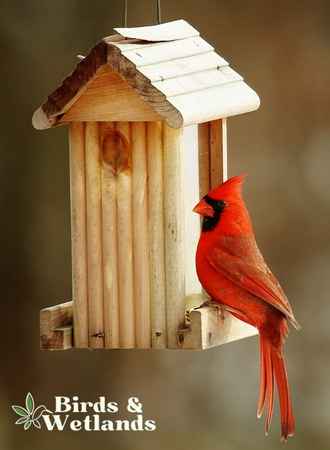
Be patient.
It may take some time for birds to discover and use the birdhouse. Keep going even if you don’t see any activity right away. Continue providing food, water, and shelter in the area; eventually, birds will start using the birdhouse.
What birds use birdhouses?
Common backyard birds use birdhouses and nest boxes as safe places to build their nests and raise their young. These artificial structures can provide a vital bird resource in areas where natural nesting sites are scarce.
Some of the most well-known birds that use birdhouses are the eastern bluebirds. These small, strikingly colored wild birds are found throughout the eastern United States and southern Canada so you can find bluebird boxes across the continent. They prefer open fields and meadows with scattered trees and will readily nest in birdhouses mounted on poles or trees.
Tree swallows also use readily available birdhouses and compete with other birds for these prime nesting spots. These birds nest in cavities of dead trees and those abandoned by other birds such as woodpeckers.
Purple martins are another bird species that commonly use birdhouses. These members of the swallow family are found throughout much of North America. They are known for their aerial acrobatics and their preference for communal nesting sites. Purple martins nest in colonies.
Other bird species commonly using birdhouses and nest boxes include the house wrens, Carolina chickadee, Carolina wrens, American kestrel, barn swallows, screech owl, house sparrows, red-headed woodpecker and wood ducks. Each bird species has unique nesting preferences, so it is important to choose a birdhouse or nest box specifically designed for the species you want to attract.
In addition to providing bird nesting sites, birdhouses and nest boxes can also provide opportunities for bird enthusiasts to observe and learn about the behavior of these fascinating creatures.
By selecting the right type of birdhouse and placing it in a suitable location on a tree trunk or a pole, you can help support local bird populations and enjoy the beauty of these feathered neighbors in your own backyard.
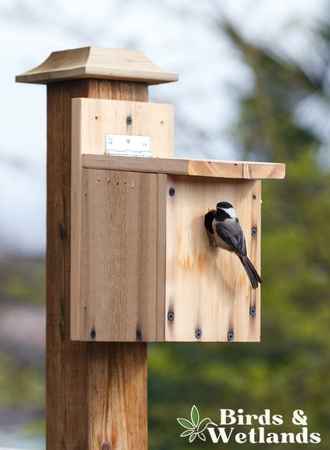
How do birdhouses work?
Birdhouses are small structures designed to provide shelter and a safe place for birds to build their nests and raise their young. They are often used along with bird feeders and bird baths to attract birds to gardens and bird-friendly spaces, allowing backyard birders to observe and enjoy their natural behavior up close.
The basic design of a bird house is quite simple. It typically consists of a wooden box with a hole on one side for birds to enter and exit and an interior cavity where the birds can build their nest.
The size and shape of the hole can vary depending on the bird species the house is intended for, as different birds have different preferences regarding the size and shape of their nesting sites.
When a bird finds a suitable nesting site, it will build a nest inside the birdhouse using twigs, grass, and feathers. The nest provides a comfortable and secure place for the birds to lay eggs and raise their young. Once the eggs hatch, the parents will feed and care for the chicks until they are ready to leave the nest and begin their own lives.
Some modern birdhouses provide more than just a safe nesting site for backyard wildlife. These birdhouses come with small trays or compartments for birdseed or suet, which will attract birds to the area and provide them with a reliable food source.
Do you put bird food in a birdhouse?
Many birders wonder if they should also put bird food inside the birdhouse to attract more birds. The answer to this question depends on the type of birdhouse and the species of birds that you want to attract.
Some birdhouses are designed specifically for nesting and should not be used for feeding. These birdhouses typically have a small entrance hole and a secure structure that protects birds from predators and the elements. Placing bird food inside this type of birdhouse can create an unsanitary and overcrowded environment that can harm nesting birds and their offspring.
On the other hand, some birdhouses are designed for feeding and nesting. These birdhouses usually have a larger entrance hole and a tray or perch where you can place bird food. They are ideal for attracting birds that prefer to feed on seeds, suet, or nectar, such as finches, chickadees, and hummingbirds.
If you want to put bird food in your birdhouse, choosing the right type of food and feeder is important. Different bird species have different dietary needs, so it is important to research the birds in your area and find out what food they prefer.
For example, some birds prefer seeds or nuts, while others prefer insects or fruit. You can find bird food and feeders at your local pet store or online, and you can also make your own bird food from natural ingredients such as sunflower seeds, dried fruit, and mealworms.
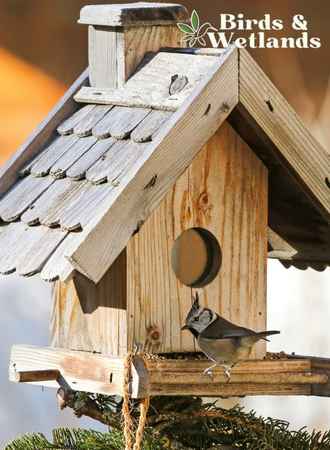
What kind of nesting materials do garden birds need?
Garden birds need various materials to build their nests during breeding season, and the type of materials they use can vary depending on the species. Generally, birds use natural materials, such as twigs, grasses, leaves, and moss, to construct their nests at their nest sites. These materials are readily available in most garden environments and are easily gathered by birds.
Twigs and small branches are common materials used by many species of garden birds, including robins, wrens, and blackbirds. They are typically used to form the main structure of the nest and are often interwoven with other materials, such as grasses and leaves to create a sturdy base.
Wood shavings, grasses and straws are also popular materials, particularly for ground-nesting birds such as thrushes and finches, and cavity nesters. These materials are often used to line the inside of the nest and provide a soft, comfortable surface for the eggs and chicks.
Leaves and moss are commonly used materials, particularly for species that build more compact, cup-shaped nests near woody vegetation. Birds such as blue tits and great tits often use these materials to create a cozy, insulated nest that protects from the elements.
In addition to natural materials, birds may also use other items found in the garden, such as feathers, animal hair, and even bits of string or fabric. These materials can provide additional insulation and make the nest more comfortable for the birds.
It is important to note that while birds may use a variety of materials to build nests, it is crucial not to provide artificial materials such as plastic or synthetic fibers, which can be harmful to birds and their chicks.
If you already have a birdhouse, remove old nesting material at the start of the nesting season. By providing a range of natural materials in your garden, you can create a welcoming environment for a variety of bird species, helping to support their breeding efforts and contribute to the local ecosystem.
